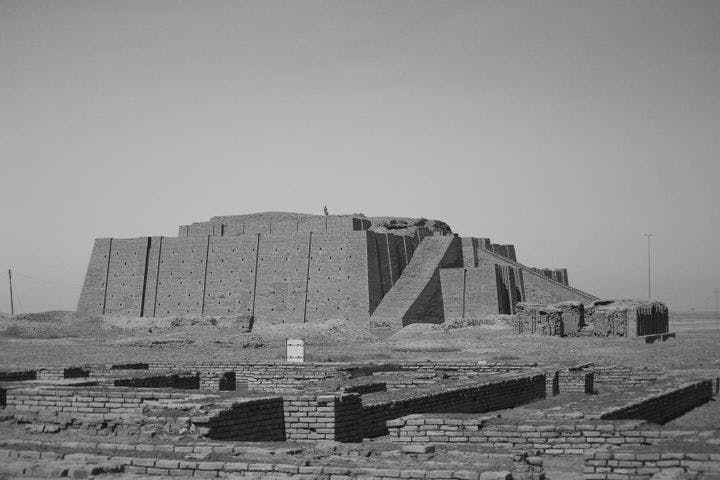Fall 2008
Mesopotamian Treasures
– The Wilson Quarterly
Evidence of ongoing destruction of Iraq's most celebrated archaeological sites is as illusory as WMDs.
Rarely have so many people been so mistaken about a country as have been wrong on Iraq: Wrong about weapons of mass destruction. Wrong about mobile weapons labs. Wrong about the plundering of the National Museum. And now, wrong again about the ongoing destruction of the nation’s most celebrated archaeological sites.
An international team of archaeologists helicoptered into eight of the country’s ancient settlements this past June to check out reports of illegal digging. They found exactly zero evidence of looting, writes Martin Bailey, a correspondent for The Art Newspaper. Touching down for visits of between 40 minutes and two hours per excavation, they failed to find “a single recent dig hole.” The archaeologists picked the sites to visit, surveyed the terrain, and were allowed to move freely around the areas under the armed protection of British guards.
The threat of looting was no small one. Among the excavations, the Iraq experts visited Ur, reputed birthplace of the Biblical patriarch Abraham, site of the best-preserved ancient ziggurat and location of a royal graveyard replete with gold and silver. They checked out Eridu, which contains 18 levels of building, the first possibly antedating the great flood recounted in ancient religious texts, and the last built a few years after the likely invention of writing. And they landed in Ubaid, cradle of a culture that thrived from about 5000 to 4000 BC, and Lagash, the original abode of some of the most spectacular artifacts now in the Louvre in Paris.
The experts toured only in the south, and visited only a tiny fraction of Iraq’s thousands of archaeological sites. They did find some damage. The worst instances were a dozen trenches dug in the mound at Ubaid by Saddam Hussein’s forces in 2003 to disguise tanks and armored personnel carriers. The archaeologists also spied a few paper food wrappers that American troops had left behind at Tell el Lahm, and they found that the landscape of Ur had been marred by large numbers of troops tramping over the site in desert boots.
The team leader, John Curtis of the British Museum’s Middle East department, told Bailey that greater damage may have been forestalled by several watchtowers built with Italian assistance in 2003, roving police teams, and the continuing vigilance of local guards. Perhaps equally important was economics. With art dealers and customs inspectors around the world on the lookout for the contents of the National Museum, the international market for Mesopotamian antiquities has almost dried up.
* * *
THE SOURCE: “Archaeological Sites in South Iraq Have Not Been Looted, Say Experts” by Martin Bailey, in The Art Newspaper, July 1, 2008.
Photo courtesy of Flickr/Aaron White
